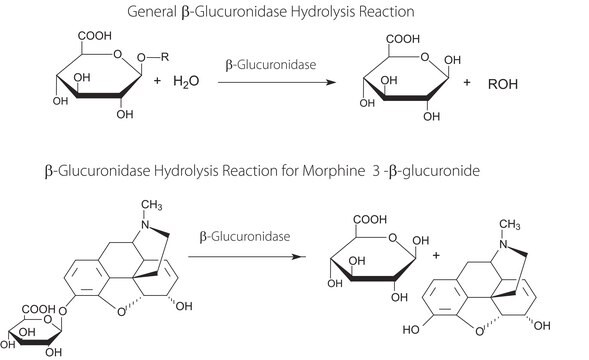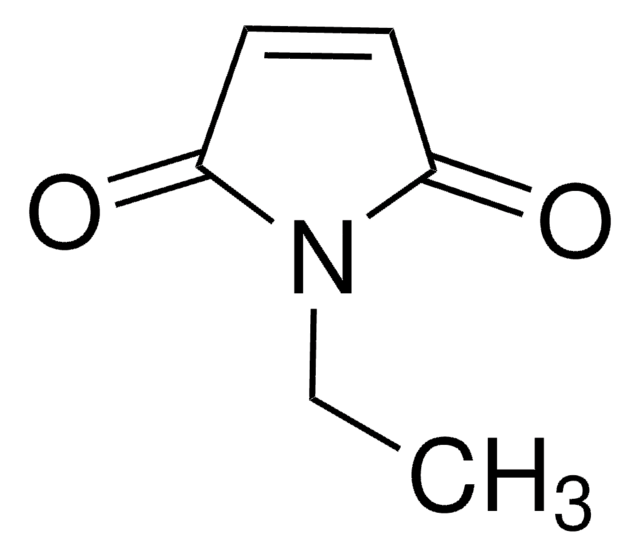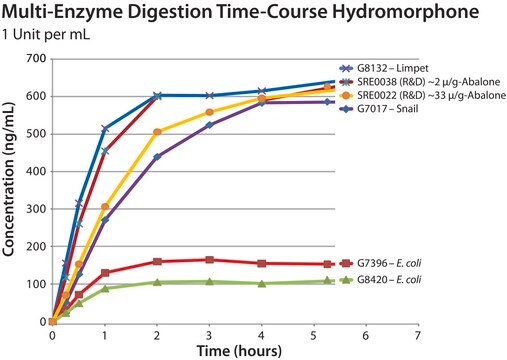Wichtige Dokumente
G4259
β-Glucuronidase from Helix aspersa (garden snail)
Type HA-4
About This Item
Empfohlene Produkte
Typ
Type HA-4
Qualitätsniveau
Form
partially purified powder
Spezifische Aktivität
≥300,000 units/g solid solid
secondary activity
≤7,500 units/g solid sulfatase
Löslichkeit
H2O: soluble 1.90-2.10 mg/mL, clear to slightly hazy
Anwendung(en)
clinical testing
Lagertemp.
−20°C
Verwandte Kategorien
Anwendung
Biochem./physiol. Wirkung
Einheitendefinition
Sonstige Hinweise
Signalwort
Danger
H-Sätze
P-Sätze
Gefahreneinstufungen
Resp. Sens. 1 - Skin Sens. 1
Lagerklassenschlüssel
11 - Combustible Solids
WGK
WGK 3
Flammpunkt (°F)
Not applicable
Flammpunkt (°C)
Not applicable
Persönliche Schutzausrüstung
Eyeshields, Gloves, type N95 (US)
Hier finden Sie alle aktuellen Versionen:
Besitzen Sie dieses Produkt bereits?
In der Dokumentenbibliothek finden Sie die Dokumentation zu den Produkten, die Sie kürzlich erworben haben.
Kunden haben sich ebenfalls angesehen
Protokolle
Enzymatic Assay of ß-Glucuronidase (EC 3.2.1.31) from Helix Pomatia and Bovine Liver. This procedure applies to all b-Glucuronidase products that are derived from Helix Pomatia and Bovine Liver. It is the responsibility of trained Analytical Services laboratory personnel to follow this procedure as written.
To optimize hydrolysis using β-glucuronidase, factors such as incubation time, temperature, hydrolysis pH, enzyme source, and enzyme concentration must be evaluated for each glucuronide metabolite to be analyzed.
Unser Team von Wissenschaftlern verfügt über Erfahrung in allen Forschungsbereichen einschließlich Life Science, Materialwissenschaften, chemischer Synthese, Chromatographie, Analytik und vielen mehr..
Setzen Sie sich mit dem technischen Dienst in Verbindung.




